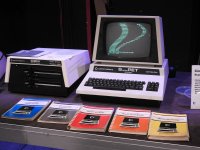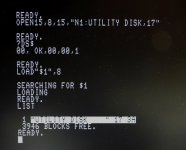Has anyone used one of the Commodore 8" 8060 series or the 8280 series of disk drives? I hate to admit this, but I didn't even know Commodore made 8" disk drives until I stumbled upon a drive list for the Pet/CBM series. Fascinated, I tried to do some research, but haven't found much so I thought I would reach out to you.
Were their advantages to the 8" drives over the 5.25" ones?
Why would Commodore make 8" disks drives? 5.25" drives seemed to be more common. Even if you used your Pet with a mainframe that had an 8" drive, I would think the formats would be incompatible. Would the Super Pet from Waterloo make use of an 8" drive? Lastly, it must have sold reasonably well with five different models made by Commodore??
Thanks for any info!!
Were their advantages to the 8" drives over the 5.25" ones?
Why would Commodore make 8" disks drives? 5.25" drives seemed to be more common. Even if you used your Pet with a mainframe that had an 8" drive, I would think the formats would be incompatible. Would the Super Pet from Waterloo make use of an 8" drive? Lastly, it must have sold reasonably well with five different models made by Commodore??
Thanks for any info!!
Last edited:



